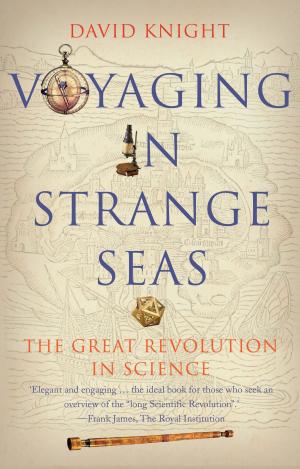| Author: | Peter Toohey | ISBN: | 9780300190489 |
| Publisher: | Yale University Press | Publication: | November 25, 2014 |
| Imprint: | Yale University Press | Language: | English |
| Author: | Peter Toohey |
| ISBN: | 9780300190489 |
| Publisher: | Yale University Press |
| Publication: | November 25, 2014 |
| Imprint: | Yale University Press |
| Language: | English |
Compete, acquire, succeed, enjoy: the pressures of living in today’s materialistic world seem predicated upon jealousy—the feelings of rivalry and resentment for possession of whatever the other has. But while our newspapers abound with stories of the sometimes droll, sometimes deadly consequences of sexual jealousy, Peter Toohey argues in this charmingly provocative book that jealousy is much more than the destructive emotion it is commonly assumed to be. It helps as much as it harms.
Examining the meaning, history, and value of jealousy, Toohey places the emotion at the core of modern culture, creativity, and civilization—not merely the sexual relationship. His eclectic approach weaves together psychology, art and literature, neuroscience, anthropology, and a host of other disciplines to offer fresh and intriguing contemporary perspectives on violence, the family, the workplace, animal behavior, and psychopathology. Ranging from the streets of London to Pacific islands, and from the classical world to today, this is an elegant, smart, and beautifully illustrated defense of a not-always-deadly sin.
Examining the meaning, history, and value of jealousy, Toohey places the emotion at the core of modern culture, creativity, and civilization—not merely the sexual relationship. His eclectic approach weaves together psychology, art and literature, neuroscience, anthropology, and a host of other disciplines to offer fresh and intriguing contemporary perspectives on violence, the family, the workplace, animal behavior, and psychopathology. Ranging from the streets of London to Pacific islands, and from the classical world to today, this is an elegant, smart, and beautifully illustrated defense of a not-always-deadly sin.
Compete, acquire, succeed, enjoy: the pressures of living in today’s materialistic world seem predicated upon jealousy—the feelings of rivalry and resentment for possession of whatever the other has. But while our newspapers abound with stories of the sometimes droll, sometimes deadly consequences of sexual jealousy, Peter Toohey argues in this charmingly provocative book that jealousy is much more than the destructive emotion it is commonly assumed to be. It helps as much as it harms.
Examining the meaning, history, and value of jealousy, Toohey places the emotion at the core of modern culture, creativity, and civilization—not merely the sexual relationship. His eclectic approach weaves together psychology, art and literature, neuroscience, anthropology, and a host of other disciplines to offer fresh and intriguing contemporary perspectives on violence, the family, the workplace, animal behavior, and psychopathology. Ranging from the streets of London to Pacific islands, and from the classical world to today, this is an elegant, smart, and beautifully illustrated defense of a not-always-deadly sin.
Examining the meaning, history, and value of jealousy, Toohey places the emotion at the core of modern culture, creativity, and civilization—not merely the sexual relationship. His eclectic approach weaves together psychology, art and literature, neuroscience, anthropology, and a host of other disciplines to offer fresh and intriguing contemporary perspectives on violence, the family, the workplace, animal behavior, and psychopathology. Ranging from the streets of London to Pacific islands, and from the classical world to today, this is an elegant, smart, and beautifully illustrated defense of a not-always-deadly sin.















